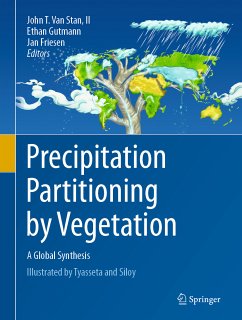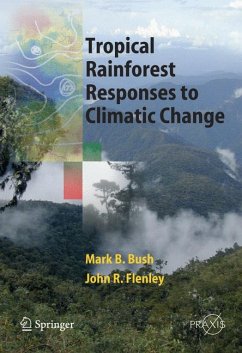
Bioclimatology and Natural Hazards (eBook, PDF)
Versandkostenfrei!
Sofort per Download lieferbar
112,95 €
inkl. MwSt.
Weitere Ausgaben:

PAYBACK Punkte
56 °P sammeln!
Anthropogenic influences to the earth's system, including the atmosphere, hydrosphere, biosphere, cryosphere and lithosphere, represent a serious challenge to our planet's ecosystems and natural environments. Bioclimatology, hydrology, bio-hydrology and eco-physiology are important scientific research areas with wide application to environmental protection, forestry, agriculture and water management, and protection against natural hazards including droughts, floods, windstorms, weather extremes, and wild fires. Bioclimatology helps to better understand the causes and impacts of natural hazards...
Anthropogenic influences to the earth's system, including the atmosphere, hydrosphere, biosphere, cryosphere and lithosphere, represent a serious challenge to our planet's ecosystems and natural environments. Bioclimatology, hydrology, bio-hydrology and eco-physiology are important scientific research areas with wide application to environmental protection, forestry, agriculture and water management, and protection against natural hazards including droughts, floods, windstorms, weather extremes, and wild fires. Bioclimatology helps to better understand the causes and impacts of natural hazards and how to prevent them. Improved knowledge of natural hazards is a vital prerequisite for the implementation of integrated resource management. It provides a useful framework for combating current climate variability and for adapting to ongoing climate change.
This book presents research on the interactions between meteorological, climatological, hydrological and biological processes in the atmospheric and terrestrial environment. It highlights a spectrum of topics associated with climate change and weather extremes and their impact on different economic sectors. The contributing authors come from renowned scientific research institutions and universities and specialise in issues of climate change, soil-plant-atmosphere interactions, hydrologic cycle, ecosystems, biosphere, and natural hazards.
This book presents research on the interactions between meteorological, climatological, hydrological and biological processes in the atmospheric and terrestrial environment. It highlights a spectrum of topics associated with climate change and weather extremes and their impact on different economic sectors. The contributing authors come from renowned scientific research institutions and universities and specialise in issues of climate change, soil-plant-atmosphere interactions, hydrologic cycle, ecosystems, biosphere, and natural hazards.
Dieser Download kann aus rechtlichen Gründen nur mit Rechnungsadresse in A, B, BG, CY, CZ, D, DK, EW, E, FIN, F, GR, HR, H, IRL, I, LT, L, LR, M, NL, PL, P, R, S, SLO, SK ausgeliefert werden.













